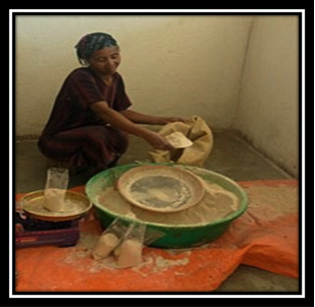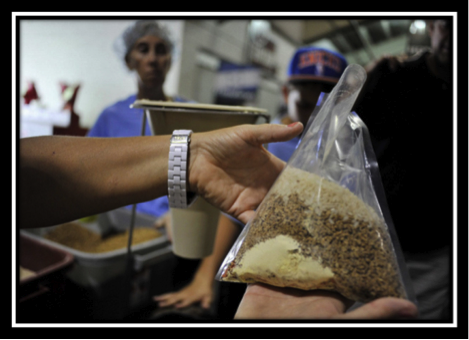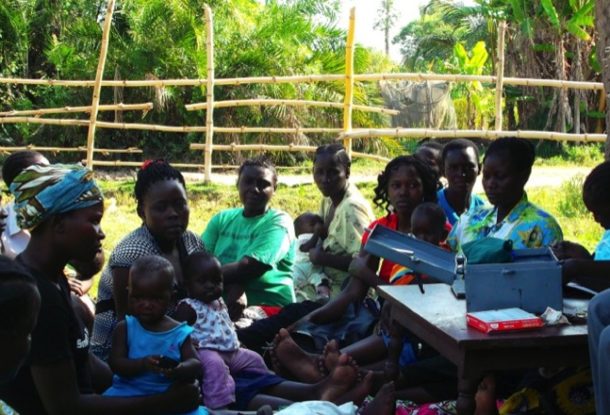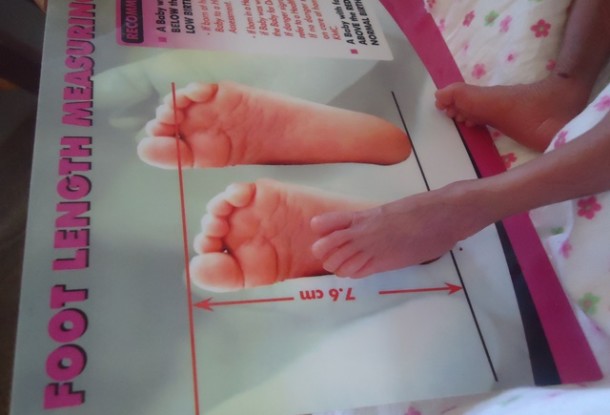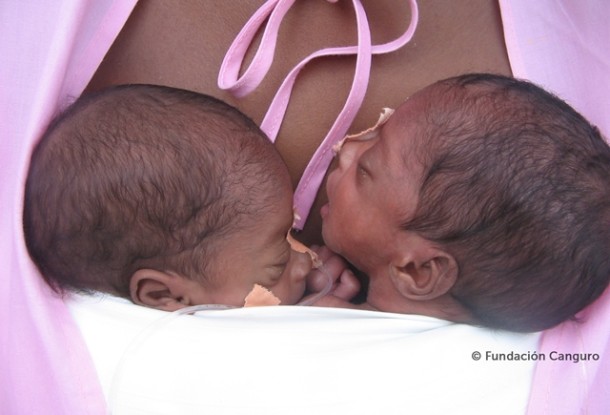Innovation Summary
 Although breast milk is the ideal diet for an infant until 2 years of age, other nutritious and safe foods should be given after 6 months until early in the second year of life in addition. Many mothers living in poverty in rural parts of Africa are unaware of the importance of weaning children on complementary foods rich in protein, and instead use diets composed entirely on cereals.
Although breast milk is the ideal diet for an infant until 2 years of age, other nutritious and safe foods should be given after 6 months until early in the second year of life in addition. Many mothers living in poverty in rural parts of Africa are unaware of the importance of weaning children on complementary foods rich in protein, and instead use diets composed entirely on cereals.
Distribution bottlenecks, also referred to as the “tragedy of the last mile”, continue to be a major hindrance to access of essential supplies, including complementary foods. This project addresses “the last mile” through a social enterprise, using women’s self-help groups to package, distribute, and sell complementary foods to mothers at their home, while allowing the women to make a profit.
The “Mile for the Brain” project has a dual objective:
- To provide access to protein-rich enhanced complementary food to mothers in rural areas, currently distribution bottleneck.
- To promote the economic empowerment of women through social entreprise.
Gallery
Impact
- 300 members from 30 women’s groups will be trained on nutrition and business entrepreneurship.
- 1200 women will receive nutritional education for children and will be able to purchase complementary foods.
He that takes medicine and neglects diet wastes the skills of the physician.
-- Chinese Proverb
Innovation
Distribution bottlenecks refer to the final leg of delivery of items to under-served populations. In Sub-Saharan Africa, this continues to be a major problem where populations living in remote areas are unable to access of essential supplies like vaccines, medicines, and essential foods and supplements to many remote areas in sub-Saharan Africa. [1] Often this is because of poor road infrastructure, poor supply chains, lack of economies of scale, and the presence of “middle men” who increase the cost of products.
In Kenya, the distribution of many essential commodities to rural and remote areas is further complicated by the fact that major manufacturers, including of enhanced complementary feeds, are concentrated in urban areas where the population concentration is highest. In addition, home preparation of complementary weaning foods that contain proteins has not been widely adopted in Kenya, possibly due to the higher cost and longer time required to prepare these protein-rich foods. [3]
This innovation aims is to increase demand for complementary foods in rural areas of Kenya by using women to market the complementary foods and the importance of complementary feeding. Face-to-face delivery of information has been identified as one of the most effective channels of increasing the adoption of complementary feeds in rural areas. [4] Thus, women will also distribute the product; the resulting increase in demand will encourage local businesses to stock complementary feeding products, thus lowering costs because of economies of scale.
From each women’s self-help group engaged in the project, 5-15 members will pool a portion of their savings by contributing as little as 10 or 20 cents each per month; this will serve as a “fee” for them to participate in the program. This savings pool will create a fund from which the women can borrow to support the costs of their complementary food business moving forward and offset expenditures they may have to use future savings for, such as medical bills and school fees. These participating women’s groups will also be provided with an initial loan (a seed fund) to purchase an initial stock of complementary foods in bulk, directly from manufacturers – cutting out the use of a middle man and thus mitigating a challenge faced by the “last mile” of delivery. The bulk purchase will be delivered to the nearest health clinic.
Under the supervision of trained staff, to ensure integrity and cleanliness, the bulk food will be repackaged into small quantities. The women will be provided with business and nutritional training skills and will engage in door-to-door marketing of the re-packaged product to mothers with infants. The women will provide mothers with the benefits of weaning infants on such foods. Each package will have a pictorial guide on preparation and benefits.
75 % of the profits from sales of complementary food products will be fed back into the revolving fund pool, while 25 % of the profits will be compensation for the women. After 6 months from time of initial set-up, the women will use the pooled funds to purchase additional product as a group, to again retail at a profit. A mobile phone-based system will track the supply chain to ensure that there is constant supply of the product.
Collaboration
Funders
- Grand Challenges Canada
Evaluation Methods
The intervention will be evaluated for its impact on child health and for its sustainability.
Child Health
Evaluated based on:
- The number or proportion of infants that receive complementary feeds.
- The nutritional status of children, assessed using three anthropometric parameters (weight-for-age, height-for-age and weight-for-height). Data will be collected at baseline, on a monthly basis, and at the end of the project. Episodes of diarrhoea, respiratory tract infection, and fever will also be recorded in the monthly assessment.
- Estimates of under-5 mortality, stunting, and fertility, monitored using LiST software.
Sustainability
Evaluated based on:
- Sales, including net profit margins from the women micro-entrepreneurs women. For the project to be sustainable, women must be able to make a profit while re-investing money into the business so it may run without subsidies
- Women’s economic status. Socio-economic evaluation of their economic status will be conducted to determine if their income has improved as a result of the intervention.
Impact of Innovation
Cost
Cost-effectiveness (defined as the number of under-5 deaths and stunting cases averted per US$1 million invested) will be estimated by dividing the number of deaths and stunting cases averted during project implementation, by the incremental costs incurred in that same year.
References
- WHO. 2004. Equitable access to essential medicines: a framework for collective action. WHO Policy Perspectives on Medicine
- Nagai, T. et al. (2009) Locally processed roasted-maize-based weaning foods fortified with legumes: factors affecting their availability and competitiveness in Accra, Ghana. African Journal of Food, Agriculture, Nutrition and Development. Vol 9, No 9.
- Huybregts L. et al (2012) The effect of adding ready-to-use supplementary food to a general food distribution on child nutritional status and morbidity: a cluster-randomized controlled trial. PLoS Med. 9(9):e1001313.
